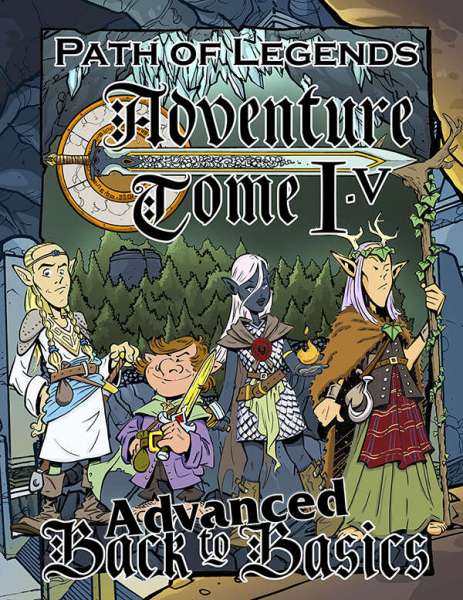Stress Testing
By The Warden
 A game is not a game until you’ve broken it and put it back together. Amen.
A game is not a game until you’ve broken it and put it back together. Amen.
It’s a remarkably true sentiment and represents the blood, sweat, and tears of the game designer’s art, much like the trials and tribulations suffered by painters, directors, and musicians the world over. All games, good or bad, begin with an idea and evolve through a progression of steps until they are finally scrapped for good or published. (In some cases, a scrapped game is later resurrected into a published game.) Along those steps, revisions are required and the designer has to step back to the drawing board to start over, rebuild that son of a bitch from scratch until the initial problems are worked out or fail to yield any positive results, thereby placing the game in the garbage bin (either the basket in the corner of the office or on top of the little icon at the corner of your desktop screen).
I’ve been on both ends of that spectrum over the past year as the game designer eager to bring that dream to reality and the playtester providing feedback on someone else’s hard work. I’m not sure if I could have appreciated my role as playtester until going through the former’s gruelling process from A to Z and it’s the reason why I fill out every online survey Wizards of the Coast sends out. Playtesters must wear many hats, though how many hats depends on the intensity of their involvement. One-time playtesters, such as those at conventions or downloading online PDFs of Fate Core, 13th Age, or anything else barreling down the tubes, typically look at the game from the role of average player and consumer. Would you buy this game if it were sold exactly as is? Would you recommend it to your friends? Would you play this game again? What changes would you prefer if you were to play it again? All of them are equally essential to the designer’s needs and my intention with today’s topic is not to diminish them so much as emphasize another breed of playtester: the evaluator.
Evaluator is a term I prefer to use for playtesters who interact with the designer on a regular, personal basis for repeated, continuous testing until the game is ready to rock and roll at our tables and Hangouts. In most cases, the designer has a team of evaluators hand-picked from close friends both in person and online whom they trust to fulfill the role to its every requirement. Evaluators see the game through from the very beginning and test the game like no other, adapting with every revision brought to the table and comparing notes, helping the designer reach the big picture with invested interest. Above all else, their job is to stress test the game to its maximum potential. What some noob GMs may call this “a royal pain in the ass,” designers appreciate them for their candid input and determination to define just how far these mechanics truly go.
Stress testing is fundamental to a game’s success for the simple reason that roleplaying games demand it. The purpose of a roleplaying game is to allow players to fulfill their every thought and plan as the central characters of an evolving story and if that game cannot deliver on said promise, you might as well stamp that on the box and try selling it with a giant detraction on the cover, because RPG fans will certainly do it for you.
LEARNING FROM PAST MISTAKES
It’s easier said than done to drop this hefty ball, regardless of how big your operation may be. Take comfort, independent publishers, for some of the big boys have done it in spades. D&D 4th edition is renowned for its weaknesses in perhaps one of the edition’s greatest promotions: epic levels. Original editions of epic level characters capped out at the 20th level, while the last instalment of D&D took it ran all the way up to 30th level… and failed. Monsters and penultimate villains, such as Orcus, failed to stir even a single bead of sweat against your average 30th-level party, even after a few tweaks here and there (including multiple turns in a single round). Not so much because of the math, but these challenges were never able to handle the multitude of achievements collected and earned by a group of 30th-level characters, from magic items to attack powers. In time, the same gripes started turning to the paragon levels (11-20) until the common consensus was playing the game up to 10th level and calling it a campaign.
D&D Next has learned from these past failings and currently undergoes a serious amount of stress testing unlike any other new RPG ever. The latest packages provided to subscribers allow players to create their own characters, play them up to 20th level, and grant DMs the ability to craft their own material rather than simply play out the existing adventures provided. For the first time in months, my regular D&D group started up a new campaign using the Next generation material, a common feat seen around the D&D community. The design and development teams are literally providing tens of thousands of players to stretch this sucker to the max and see where it goes, making adjustments and tweaks along the way until they can truly say they have a finished product. This approach is now being duplicated with Fate Core, despite its decade-long existence on the market in order to verify the function of the system’s new language and revisions.
A WIDE OPEN FIELD OF TROUBLE
Universal system publications, such as Savage Worlds or Fate Core, demand this level of stress testing for the sheer fact they exist solely to allow players and Gamemasters to craft a near unlimited amount of trouble and drama for their players. Any world, any setting, any style of play and this book needs to offer it all (or at least a vital amount of material necessary for Gamemasters to hone and shape in their own direction). Ironically enough, D&D needs to do the same (while at a lesser extent) because only a portion of its fans actually play in the existing worlds and pre-published adventures; the rest use the rules to bring their own settings to life without the bother of building their own mechanics. That’s the exception to the rule. Whereas some publishers, such as Dias Ex Machina with Amethyst, have taken pains to convert something like D&D into a science fantasy/modern setting, such intentions were never built into the mechanics.
Guns have to exist in harmony with swords and magic needs to be best friends with technology. Not just for the sake of continuity, but they may find themselves in the same setting. (Think about vibroblades from Star Wars.) Truthfully, these are extensions of the system’s core mechanics, despite their role as important markers of the setting’s impact and reach, and they have to represent the core concepts of the system’s intention without dissolving it all into dust. For example, if a system is intended to create extended combat sequences running between five and eight rounds per fight and your guns allow players to kill their enemies in a single round, you’ve got a problem. Simultaneously, they cannot come across as a joke (like 1d6 damage for a submachine gun) or else your rules appear broken (or simply weak) as soon as the first player pulls the trigger.
Cohesion is gospel for universal systems and typically remains a tell-tale marker of a game built using a universal system (or an intended one, at least) versus one constructed with only the individual setting and release in mind. While I’ve never been able to find anything indicating truth or theory into my opinion, the d20 System never seemed designed for anything other than D&D when it premiered in 2000. Additional products and settings released using d20 contained vast or slightly different concepts for health, as an example, swapping out hit points for vitality and wound points when paladins were swapped out for Jedi. That, and many of the d20’s key features were named after old D&D terms, such as Armor Class, which spawned the term “difficulty class” to work hand-in-hand with this defence mechanic.
Granted, each universal system is built with certain parameters in mind, particularly in defining the role of combat, social traits, and environment within the mechanics. There are few systems capable of handling epic battles and fierce debates equally without serious modifications, so even this consideration has limitations in the long run.
Where universal systems truly run into concerns warranting stress testing is when they apply magic and/or technology into the equation. Left unchecked, either one can cause a game to implode (break the game) or explode (everyone simply plays a spellcaster). Not only do these components need to allow consistent function and impact within the game, but they need to maintain that function over the course of an entire campaign and exist at the appropriate level of experience. For example, giving 1st-level characters access to weapons of mass destruction can cause the game to explode at first and then implode if those same weapons don’t do jack by 10th level. The only guaranteed tool to ensure such errors cannot occur is stress testing.
Once you have it down, the sky is truly the limit. Modifications are usually hacks to accommodate particular design choices required to mimic specific tones and styles or tack on new concepts, such as psionics, time travel, or stone weapons. After months – or potentially years – of stress testing, that effort becomes an effective marketing tool assuring players what they’ve purchased has been given the utmost care and attention to detail through direct play. The irony is that the number of hours invested into this level of playtesting is perhaps much more than the total number of hours any player will actually spend playing with their own group(s), but that’s not what it’s all about. No amount of stress testing compares to the total number of hours, sessions, and campaigns stretched around the world when the system becomes a massive success and that makes the effort worth the trouble.

